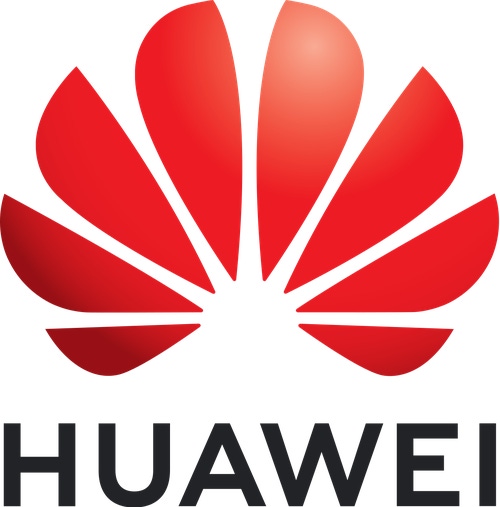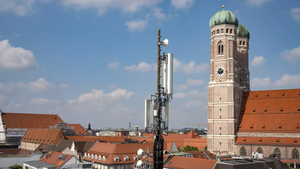January 4, 2019

We are on the path to a 5G era. 5G enables new service experiences. It defines a new network architecture, an architecture that enables new 5G services. To help carriers to evolve their networks to use this new architecture and to enable new services, but while still protecting investments into inventory networks, Huawei has been developing, and has deployed, a Minimalist Core Network solution. Huawei's Minimalist Core Network leverages innovative new technologies to confront difficult challenges to 5G evolution, and to enable innovative new services. System architectures, O&M and services are all evolving, and the Huawei 5G oriented Minimalist Core Network provides a simplified, more agile core for 2G/3G/4G/5G and fixed networks.
Minimalist network architecture
New network nodes and components have been introduced to the system, which has added dozens of new network interfaces. Interoperability and handovers are getting more complex. They are more challenging than before. Costs are increasing, and the system is becoming more difficult to evolve. Speed-to-market, and service and business agility are more essential than ever before. To rise to these challenges, the Huawei 5G Oriented Minimalist Core Network decomposes network functions into microservices, so that the network runs on a micro-service centric architecture (MCA). MCA makes it possible to reinvent system design and construct functions as needed. Minimalist Core Network uses a single, converged control plane, which highly simplifies cooperation and reduces signaling. The minimalist core network has a single, converged user plane, within which a 5G Core Network UPF function has also been added to the system, along with a converged 3G/4G unifite GTP gateway. To simplify the voice network, Huawei has developed a unified SBC, which supports IMS voice for 4G/5G and MGW for mobile softwitch network for traditional 2G/3G and fixed networks. This SBC allows for a simplified, unified voice network based upon centralized IMS services, a single voice network for all generations of fixed and mobile networks. Once the network is consolidated, user service provisioning and user subscriptions are managed within the same profile. The user experience is consistent across 4G and 5G. New services that subscribers obtained through 5G are enabled within their 4G and 3G services as well.
In addition, from a network engineering perspective, all the components and functions are deployed with NFV-SDN, which makes Huawei Minimalist Core Network extremely flexible. It underpins network automation and business agility.
Simplified network O&M
The architecture and the simplicity of Huawei Minimalist Core Network can help to significantly improve the of network maintenance efficiency. Network maintenance is a domain that needs significant improvement, and the architecture and the simplicity of Huawei Minimalist Core Network can help. NFV-SDN automates the engineering, but troubleshooting is still challenging, especially for scenarios that cross multiple domains, multiple vendors, and complex sets of privileges. AI can solve this complex problem. With a model training platform special designed for the Minimalist Core Network, network statistics are collected and analyzed in real-time. Instead of using a static threshold as the bar to detect abnormalities, Huawei minimalist core network uses a dynamic threshold that is dynamically generated through machine learning. Dynamic thresholds give us more responsive algorithms, algorithms that can detect variations in the data curve, not just in isolated numbers. AI can help distinguish anomalies from degradations. Anomaly detection gives a powerful ability to predict potential failures before they occur. Those potential failures are repaired automatically, which significantly reduces the complexity of network O&M. 85% of all anomalies can be detected automatically within 1 minute, and root causes can be identified automatically within in 10. This is the power of AI.
In addition, to simpler O&M, Huawei Minimalist Core Network provides a series of tools from design time to runtime deployment and orchestration. Description files for Cloud Native components are created and imported to the system automatically based upon the network services. There are tools to make it easy to deploy and maintain the system, and to reduce the time required for system deployment from 6 months to just 4 weeks.
A/B testing has been introduced into the Minimalist Core Network upgrade process, which allows operators to expand business to new markets easily and promptly. Automation drives down the cost of operation, making services more affordable and improving operator margins. A/B testing impacts the entire industry.
The ultimate service experience
Service is key. End users select service providers based on who delivers the best experience. When carriers go through a network or service transformation, the churn rate increases, and the reason why is obvious: Quality and cost have been the two most influential factors affecting subscribers’ selections. Huawei Minimalist Core Network keeps user experience stable during 4G to 5G evolution, which attracts end users and to helps carriers maintain their subscriber base. Users don't even need to change their SIM to enable 5G services. Their subscription profiles are stored and processed within the same schema in the 3G/4G/5G HSS systems. Unified PCRF/UPCF functions enable next-gen services at affordable price points.
The 5G next generation core gives end user higher service bandwidth and lower latency. Huawei Minimalist Core Network delivers 5G-UHD through distributed multi-edge computing (MEC) with embedded CDN functions. MEC ensures high bandwidth, low latency video. A single user can consume up to 20 Gbps when using high bitrate applications like fixed wireless access (FWA) or AR/VR.
Three powerful new technologies make 5G evolution fast and simple: MCA architecture, AI powered O&M, and UPCF & MEC gateway.
Huawei 5G Minimalist Core Network makes complex networks simple.
— Zhaojiang Fang, Solution Marketing Director, Huawei Technologies
You May Also Like
.jpg?width=300&auto=webp&quality=80&disable=upscale)









